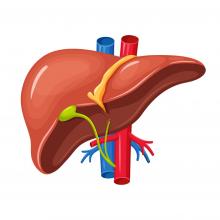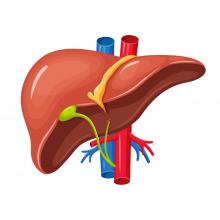Recent Publications

Karl Skorecki: A COVID-19 jab in the right direction (Lancet. )
While we believe that Israel should indeed offer the Palestinian Authority supplies of vaccine, the calumny by the Lancet Palestinian Health Alliance (LPHA) in The Lancet takes the cake. First, under international law and according to the Oslo Accords, Israel is actually under no legal obligation to offer medical aid to the Palestinian Authority, which is the statutory body responsible for the health of Palestinians. Certainly, not any more than the UK owes Ireland....We ask for a little perspective and fairness, please.

Limor Meoded Danon: The Parental Struggle With the Israeli Genital Socialization Process (Qual Health Res . )
The focus of this article is on how parents of children with "nonnormative" genitalia cope with the conflict between the genital socialization process and their children's genital autonomy in the Israeli medical-sociocultural context.

Tom Domovitz, Meital Gal-Tanamy: Tracking Down the Epigenetic Footprint of HCV-Induced Hepatocarcinogenesis (J Clin Med . )
Hepatitis C virus (HCV) is a major cause of death and morbidity globally and is a leading cause of hepatocellular carcinoma (HCC). Incidence of HCV infections, as well as HCV-related liver diseases, are increasing. Although now, with new direct acting antivirals (DAAs) therapy available, HCV is a curable cancer-associated infectious agent, HCC prevalence is expected to continue to rise because HCC risk still persists after HCV cure. Understanding the factors that lead from HCV infection to HCC pre- and post-cure may open-up opportunities to novel strategies for HCC prevention. Herein, we provide an overview of the reported evidence for the induction of alterations in the transcriptome of host cells via epigenetic dysregulation by HCV infection and describe recent reports linking the residual risk for HCC post-cure with a persistent HCV-induced epigenetic signature.

Gassan Moady, Shelly Vons, Shaul Atar: A Comparative Retrospective Study of Patients with Takotsubo Syndrome and Acute Coronary Syndrome (Isr Med Assoc J . )
Takotsubo syndrome (TTS) is a non-ischemic cardiomyopathy characterized by an acute reversible left ventricular dysfunction with typical apical ballooning, usually with subsequent complete spontaneous recovery. TTS shares several features with acute coronary syndrome (ACS), including clinical presentation, ECG changes, and elevated troponin. This study identifies different features that may help differentiate between TTS and ACS with presentation based on presenting symptoms and physical examination.

Amir Mari, Tawfik Khoury, Mahamid Baker, Halel Said Ahmad, Fadi Abu Baker, Mahmud Mahamid: The Impact of Ramadan Fasting on Fatty Liver Disease Severity: A Retrospective Case Control Study from Israel (Isr Med Assoc J . )
Non-alcoholic fatty liver disease (NAFLD) is emerging as an important public health condition. The effect of Ramadan fasting on several metabolic conditions has been previously assessed. Assess the impact of Ramadan fasting on non-alcoholic steatohepatitis (NASH) severity scores.

Alexander Lerner: COVID-19 Crisis Effect: Experience at Two Orthopedic Trauma Units (Isr Med Assoc J . )
The coronavirus disease-2019 (COVID-19) crisis has affected how hospitals work and has had an effect on orthopedic surgery. Compares patient management and low-energy and high-energy trauma treatment at two orthopedic trauma units during the COVID-19 crisis and to clarify resource demands and preparedness in orthopedic clinics during the state of emergency caused by the COVID-19 pandemic.

Soboh Soboh, Arnon Blum: Effect of Telemedicine Dietary Intervention for Endothelial Function in Patients with Type 2 Diabetes Mellitus on Mediterranean Diet (Randomized Controlled Trial)
Patients with type 2 diabetes mellitus (T2DM) have a high rate of cardiovascular disease (CVD). The Mediterranean diet is preferred for CVD prevention. Endothelial dysfunction is demonstrated early in T2DM. Studies the effects of dietary intervention of T2DM patients without known CVD on endothelial function and vascular inflammation.

Yaakov Maman: Image-based pooled whole-genome CRISPRi screening for subcellular phenotypes (J Cell Biol . )
Genome-wide CRISPR screens have transformed our ability to systematically interrogate human gene function, but are currently limited to a subset of cellular phenotypes. We report a novel pooled screening approach for a wider range of cellular and subtle subcellular phenotypes.

Alla Lubovich, Fabio Kusniec, Doron Sudarsky, Liza Grosman-Rimon, Shemy Carasso: Predictors of Mitral Regurgitation Severity Improvement in Patients With Severe Aortic Stenosis Undergoing Transcatheter Aortic Valve Implantation (Cardiol Res .)
Mitral regurgitation (MR) is frequently associated with severe aortic stenosis (AS). Significant MR is associated with less favorable prognosis after transcatheter aortic valve implantation (TAVI), including higher early and late mortality rate. The severity of MR is improved in about half of patients undergoing TAVI. However, the predictors of MR improvement after TAVI are unknown. We sought to investigate whether several demographic, clinical, echocardiographic and laboratory parameters and procedure characteristics are predictive of MR severity improvement after TAVI procedure.

Gershon Volpin: Damage control orthopaedics in polytraumatized patients- current concepts (J Clin Orthop Trauma . )
The principles of fracture management in patients with multiple injuries continue to be of crucial importance. Early treatment of unstable polytraumatized patients with head, chest, abdomen or pelvic injuries, with blood loss followed by immediate fracture fixation (Early Total Care -ETC) may be associated with secondary life threatening posttraumatic systemic inflammatory response syndrome (SIRS).... The following paper is going to summarize historical backgrounds and recent concepts in treatment of polytraumatized patients.

Johnny S. Younis: Does large endometrioma per se increase AMH level? (Reprod Biomed Online .)
Women with endometriosis, especially those with endometrioma, present a considerable challenge for ovarian reserve appraisal. This diagnostic difficulty arises from several fundamental questions inherently linked to patient management: the potential influence of endometrioma on ovarian reserve; the adverse effect of ovarian surgery on ovarian reserve; and the adequacy of the established ovarian reserve biomarkers, anti-Müllerian hormone and antral follicle count, to appraise ovarian reserve accurately in these women. Until recently, a key argument was that the development and growth of endometriomas is associated with a progressive damage to normal ovarian tissue, resulting in a concomitant reduction in serum AMH levels. Contrary to this widely accepted position; recent studies have reported that, in women with no previous history of ovarian surgery, AMH levels were increased in women with large endometriomas. These findings are surprising and, if replicated, would have substantial clinical implications. In this commentary, we would, however, urge caution before these reports lead to systematic changes in clinical practice, and recommend urgent replication as the finding linking large endometrioma to high serum AMH levels seems to be biologically implausible, and contradicts the existing extensive body of research.

David Karasik: Genome-wide meta-analysis of muscle weakness identifies 15 susceptibility loci in older men and women (Nat Commun .)
Low muscle strength is an important heritable indicator of poor health linked to morbidity and mortality in older people. In a genome-wide association study meta-analysis of 256,523 Europeans aged 60 years and over from 22 cohorts we identify 15 loci associated with muscle weakness (European Working Group on Sarcopenia in Older People definition: n = 48,596 cases, 18.9% of total), including 12 loci not implicated in previous analyses of continuous measures of grip strength. Loci include genes reportedly involved in autoimmune disease (HLA-DQA1 p = 4 × 10-17), arthritis (GDF5 p = 4 × 10-13), cell cycle control and cancer protection, regulation of transcription, and others involved in the development and maintenance of the musculoskeletal system. Using Mendelian randomization we report possible overlapping causal pathways, including diabetes susceptibility, haematological parameters, and the immune system. We conclude that muscle weakness in older adults has distinct mechanisms from continuous strength, including several pathways considered to be hallmarks of ageing.

United by Hope, Divided by Access: Country Mapping of COVID-19 Information Accessibility and Its Consequences on Pandemic Eradication (Front Med (Lausanne) .)
Many government websites and mobile content are inaccessible for people with vision, hearing, cognitive, and motor impairments. The COVID-19 pandemic highlighted these disparities when health authority website information, critical in providing resources for curbing the spread of the virus, remained inaccessible for numerous disabled populations. The Web Content Accessibility Guidelines provide comparatively universally accepted guidelines for website accessibility. We utilized these parameters to examine the number of countries with or without accessible health authority websites. The resulting data indicate a dearth of countries with websites accessible for persons with disabilities. Methods of information dissemination must take into consideration individuals with disabilities, particularly in times of global health crises.
(Amiel A Dror , Eli Layous, Matti Mizrachi, Amani Daoud, Netanel Eisenbach, Doaa Rayan, Edward Kaykov, Masad Barhum, Samer Srouji, Eyal Sela)

Hagit Hauschner: Pediatric immune thrombocytopenia: apoptotic markers may help in predicting the disease course (Pediatr Res . )
In all, 15-30% of pediatric immune thrombocytopenia (ITP) patients will remain chronically thrombocytopenic at 1 year post diagnosis. All attempts to classify patients at diagnosis have proven unsuccessful. We hypothesized that a different pathophysiology is responsible for non-chronic versus chronic pediatric ITP. We aimed to examine differences in the apoptotic markers' presentation at diagnosis between non-chronic and chronic patients.




